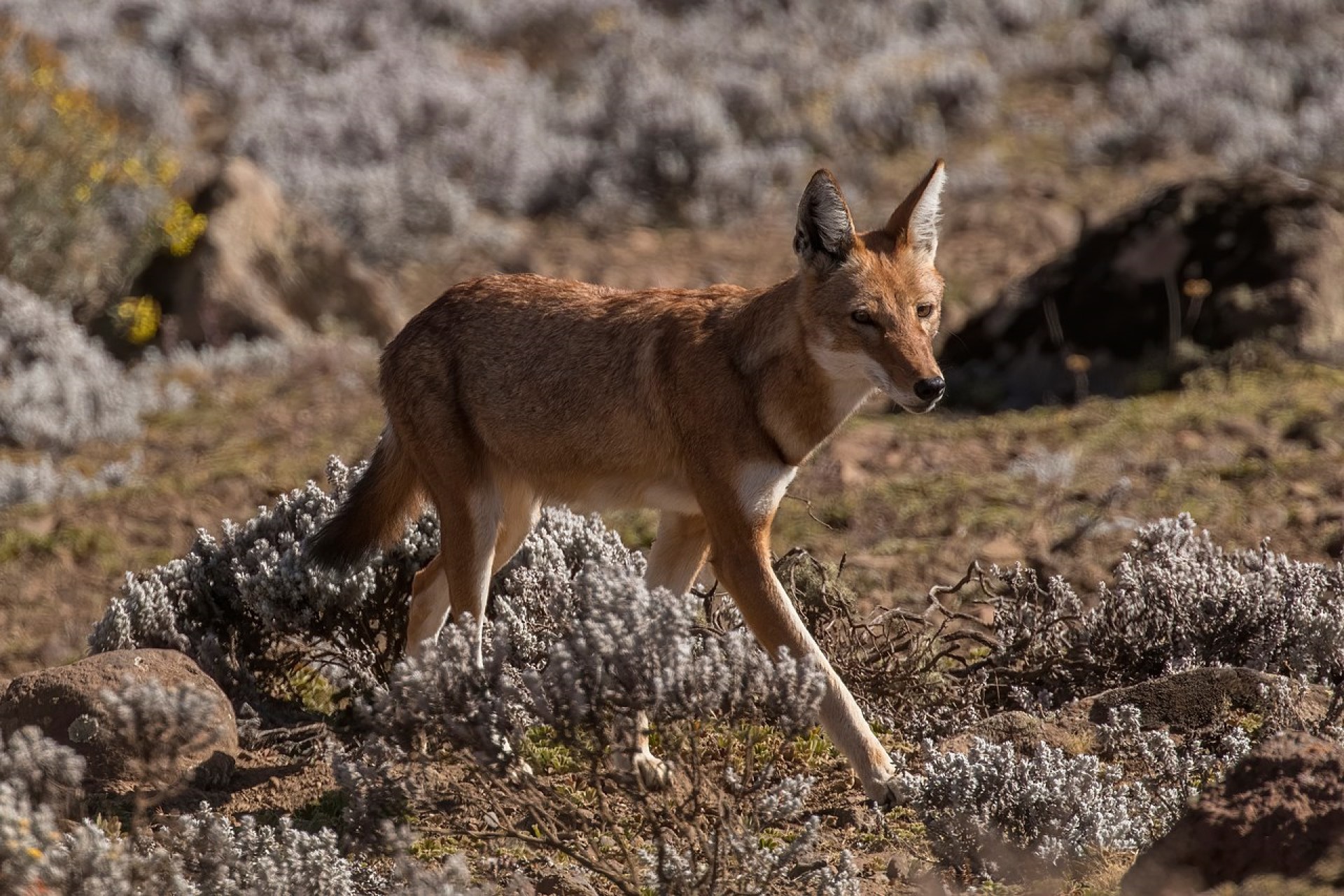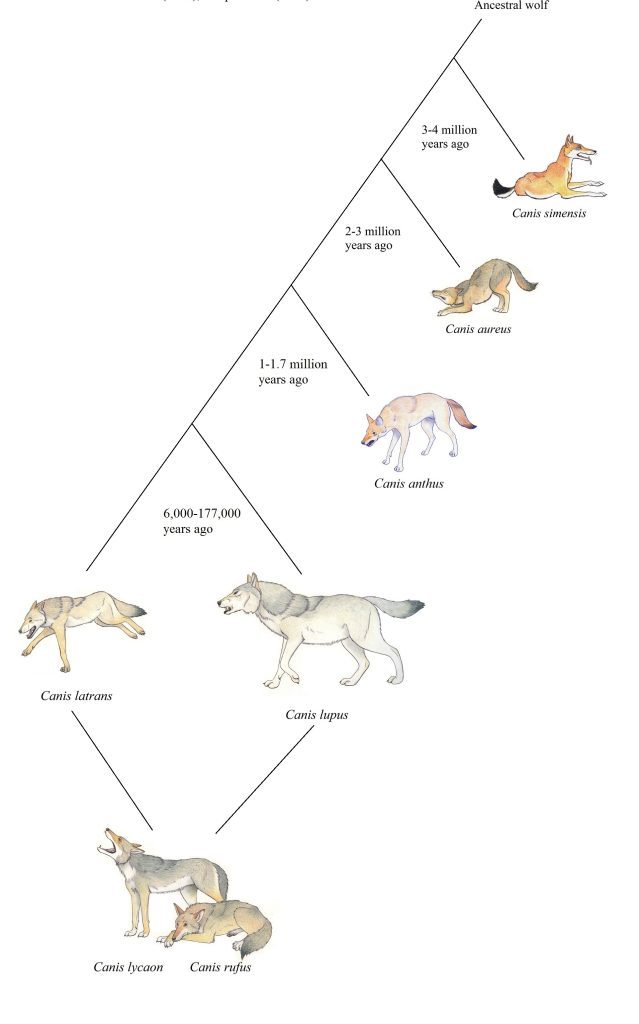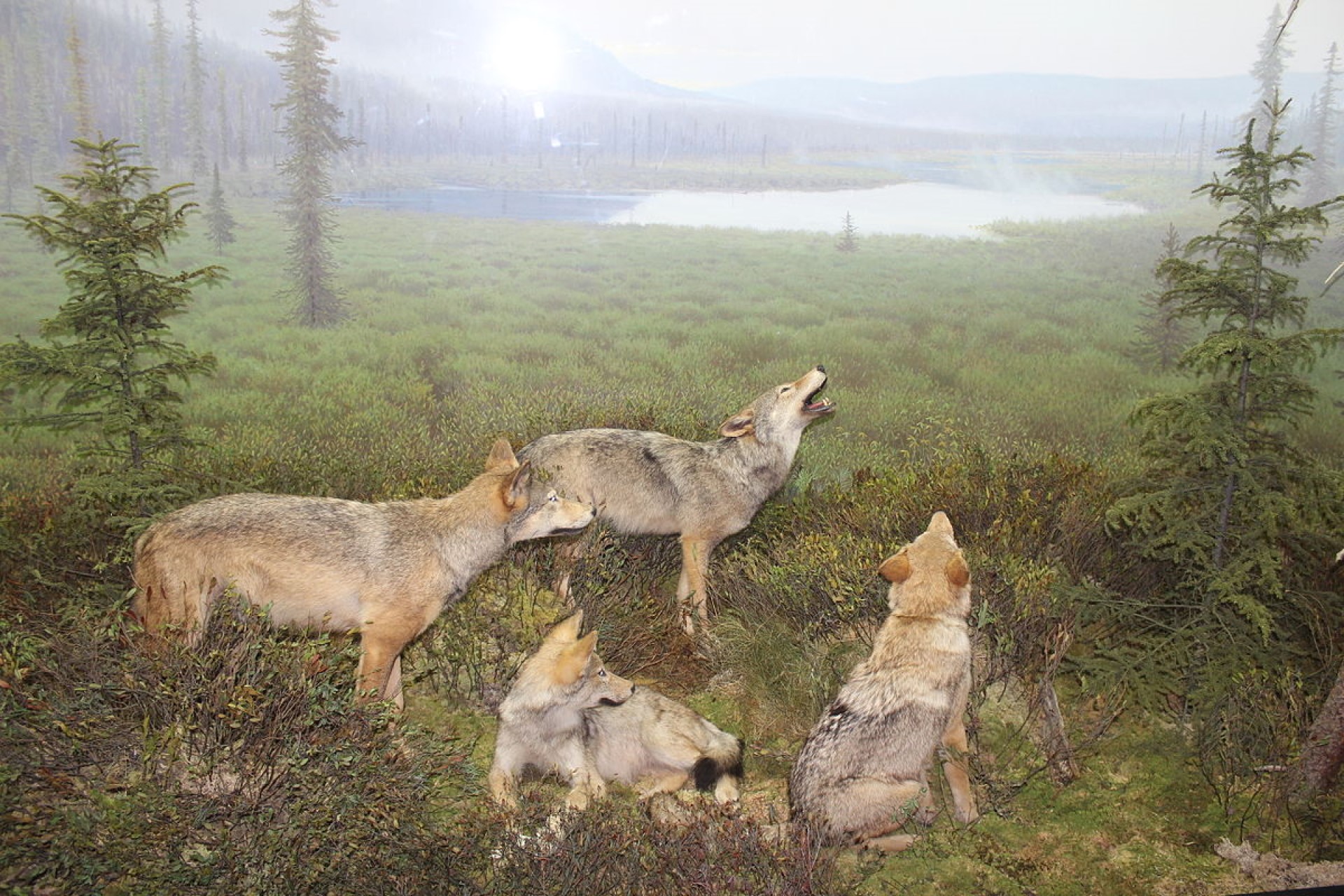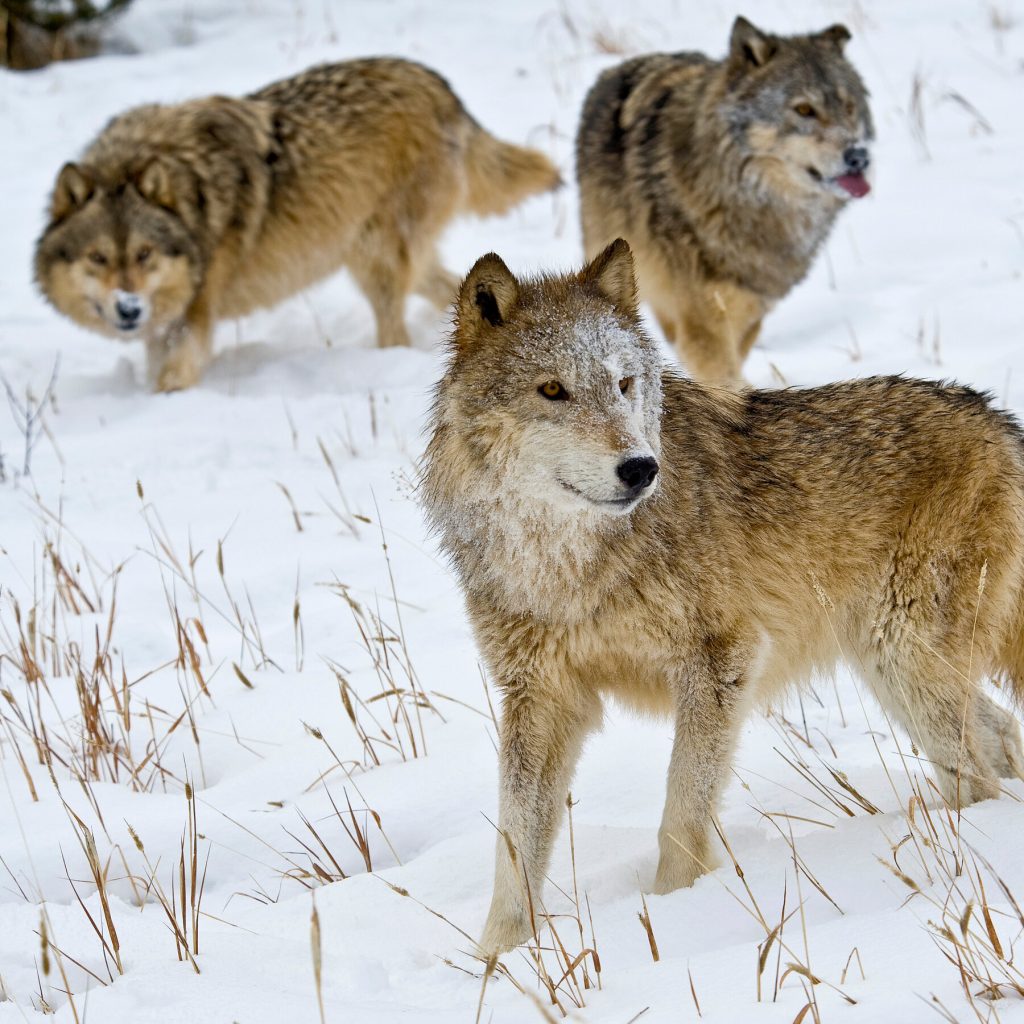
Ethiopian wolf
The Ethiopian wolf is a highly endangered canid that is restricted to the highlands of Ethiopia. Other names include the Ethiopian fox, or the Simien wolf.
In terms of size, it is about the same size as the Coyote, Genetically, they are more similar to wolves than all jackals (except the Golden jackal). Here, below you can see how closely related each of the wolves are. While they look rather like jackals, their behaviour is far more like wolves – though due to the prey in the area, they do not hunt in packs (though there are regions of earth where grey wolves do not hunt as a pack either.

Back in the early 1800s the North African wolf was defined as a separate species, why did this wild canid get redefined as a golden jackal?
- Tim
- October 16, 2020
Back in 2015 genetic analysis prove conclusively that a strange looking type of golden jackal in North Africa was actually and African wolf. Genetic analysis shows that is descended around 75% from grey wolves, with the other 25% of it’s lineage coming from Ethiopian wolves. However when first described by science back in the early …...


